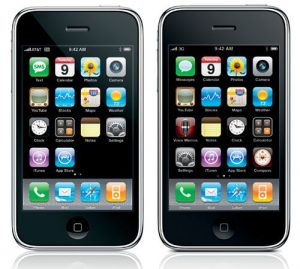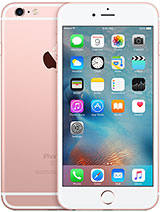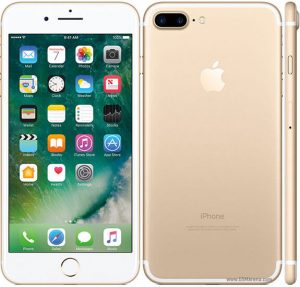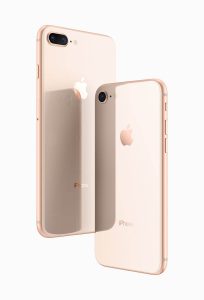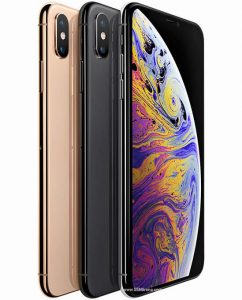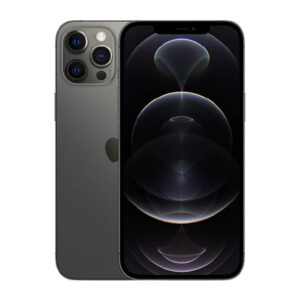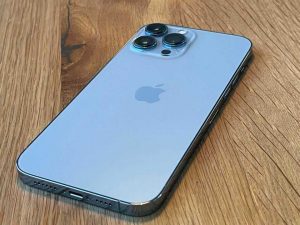Stylish design, glossy finish, powerful processor, and smooth scrolling experience are just a few of the reasons why people love iPhones.
While the sets are quite costly, their unmatched features and style make them stand out. But the iPhones we see today were unlike the earlier versions the brand started with.
To give you a better idea of how the brand evolved and how the sets changed into the ones we see today, let’s discuss iPhone generations with all iPhones in order.
Evolution of Apple – All Iphones in Order
Below we have listed each generation of iPhone with all iPhones in order to understand how each one differs from the other.
- The first Iphone: 2007
- Iphone 3G and 3GS: 2008 to 2009
- Iphone 4 and 4S: 2010 to 2011
- Iphone 5, 5S, and 5C: 2012 to 2013
- Iphone 6, 6+, 6S+, and 6S: 2014 to 2015
- Iphone SE, 7+ and 7: 2016
- Iphone 8+ and 8: 2017
- Iphone X, XS, XR, XS Max: 2017 to 2018
- iphone 11, 11 Pro, 11 Pro Max: 2019
- iPhone 12, SE (2nd Gen), 12 Mini, 12 Pro,12 Pro Max: 2020
- iPhone 13, 13 Mini, 13 Pro, 13 Pro Max: 2021
- iPhone SE (3rd Gen): 2022
Now let’s discuss each generation one by one with their key features:
The first iPhone: 2007
The iPhone made its debut in the market in 2007 with a small and chunky set. The phone was quite stylish compared with many other sets of that time.
The set had a small 3.5 inches screen, much larger than its competitors, and offered a better internet experience.
There was a small 2MP camera at the back as well, unlike today’s camera the picture quality was really bad but a camera in a phone was all we needed back then!
It required a computer to set it up which was quite inconvenient and had no App store and a had a single black wallpaper option.
Key Features:
- 3.5 inches display
- 2MP camera
- 1400mAh battery
- 128MB memory
- Offered 8 hours of Talktime
iPhone 3G and 3GS: 2008 to 2009
iPhone 3G made internet browsing better than earlier phones which were extremely slow. The new iPhone not only had better internet connectivity but also an App Store which served as a game-changer.
Third parties could now make apps for the phone and so the 3G generation came out as not just a phone but a platform for developers. Plus, iPhone 3G brought GPS capability with it, making google maps accessible to each user.
The iPhone 3GS had an App Store, and 3G connectivity as well but it also had 32GB storage which was all we needed back then.
The 3GS set offered voice control which was new in the market. It was lighter than the first generation and was available in two colors: black and white.
Key Features:
- 3G connectivity
- App Store
- Color options
- Light body
- 32GB storage
- 256MB memory
- 3MP camera
- GPS capability
- 1219mAh battery
iPhone 4 and 4S: 2010 to 2011
The iPhone 4 and 4S brought a special feature we all are addicted to today, and that is a front camera.
While today’s selfie cams are much more advanced, the iPhone 4 had a 0.3 MP cam at the front and a 5MP back camera. It also introduced Facetime with which iPhone users could video chat and see each other through the front camera.
iPhone 4S introduced Siri, which is a voice-controlled assistant powered by AI and is still used today. It also featured iMessage and Twitter integration making it easier to text and stay connected on social media.
Key Features:
- 0.3 MP Front camera
- Siri
- IMessage
- Twitter integration
- 512MB memory
- 1432mAh battery
iPhone 5, 5S, and 5C: 2012 to 2013
The iPhone 5 was a big improvement compared to previous generations with a 4 inches display to see the world a bit more clearly.
It also had 4G LTE connectivity making internet browsing faster than before. The iPhone 5C was made of plastic and was introduced as an affordable set. It came in 4 funky colors adding to its beauty.
The iPhone 5S on the other hand had the same stylish design the iPhone was praised for. On top of that, it had features like Dual flash, Touch ID, M7 Motion Coprocessor, and Slow-Motion video.
Key Features:
- 4G LTE
- 1.2MP front cam
- 8MP back cam
- 64GB storage
- 1508 mAh battery
- Dual flash
- Touch ID
- M7 motion coprocessor
- Slow-motion video
- 3D Touch
iPhone 6, 6+, 6S+, and 6S: 2014 to 2015
The iPhone 6 had a much bigger 4.7-inch screen while the iPhone 6+ had a 5.5-inch screen. The large screen greatly improved the user experience and made visuals much more appealing.
Both phones had Near Field Communication (NFC) which gave birth to Apple Pay. Through NFC one could use an iPhone as a payment device.
The iPhone 6 and 6S didn’t bring any revolutionary features but they were improved in terms of camera, and memory. The iPhone 6S and 6S+ had a 12MP back camera and a 5MP front camera.
The 6S+ also brought Optical Image Stabilization for a better camera experience.
Key Features:
- 12MP back camera
- 5MP front camera
- Optical Image Stabilization
- Near Field Communication (NFC)
- 2750 mAh battery
iPhone SE, 7+ and 7: 2016
iPhone SE was a popular version of the iPhone 6S but without 3D touch. It was very affordable and looked like an iPhone 5 which is great for those who love smaller sets.
The iPhone 7 and 7+ had much more to offer like 32GB to 256GB memory, a Dual Camera, Zoom feature, and portrait mode.
The new iPhones had no head jack which was not positively received. The iPhone 7 introduced a water and dust resistance feature which is great for such a sensitive phone.
Key Features:
- 7MP front cam
- Dual back camera
- 32GB to 256GB memory
- 2900 mAh battery
- No head jack
iPhone 8+ and 8: 2017
The iPhone 8 and 8+ offered wireless charging and an amazing camera experience. These phones had multiple filters and editing tools making it easier to play around with images. The true tone display reduced blue-light exposure, highly improving the visual experience.
The processor, camera, and memory were also improved and the latest version of iOS 12 was installed on the phone.
Key Features:
- 64-bit, 2.4 GHz processor
- iOS 12
- 64GB – 256GB memory
- Inductive charging (wireless charging)
- 2GB – 3GB RAM
- 7MP front cam
- 12MP back cam
Iphone X, XS, XR, XS Max: 2017 to 2018
Skipping iPhone 9, the brand decided on the iPhone X. The new phone came with an extra front-facing camera that made selfies better than ever! It offered portrait mode which made selfies extra special.
The iPhone X had an OLED display and a large screen bigger than the previous versions. It also introduced facial recognition, and Aniemojis (moving emojis on the screen).
The iPhone XS and XS Max came with higher processing power due to the A12 bionic chip and an edge-to-edge screen like the iPhone X.
The iPhone XR was made as a budget-friendly phone with a stylish design but fewer features to cover the cost.
Key Features:
- 64GB to 512GB storage
- 6.5 inches large display
- 3174 mAh battery
- 4GB RAM
- A12 Bionic chip
iPhone 11, 11 Pro Max, 11 Pro: 2019
The iPhone 11 was released in 6 stunning color varieties and had a 6.1-inch Liquid Retina display. A very exciting feature of the iPhone 11 was the dual back camera (wide and ultra-wide lenses) both having 12MP resolution.
The iPhone 11 Pro max came with a 5.8-inch Super Retina XDR display and 3 HDR lenses (ultra-wide, wide, telephoto).
Key Features:
- 12MP Dual and Triple back camera
- OLED Super Retina display
- A13 Bionic processor
iPhone 12, SE (2nd Gen), 12 Mini, 12 Pro,12 Pro Max: 2020
The iPhone SE (2nd gen) is another small affordable set with a 4.7-inch Retina HD display and a Home button with Touch ID like the original iPhone SE.
iPhone 12 mini is a handy phone which is great for those who like smaller phones. The iPhone 12 and 12 mini both have a ceramic front and back ceramic glass panel bound by an aluminum frame.
About the iPhone 12 has a large Super Retina XDR OLED display and is available in 5 colors. The iPhone 12 pro comes with 5G connectivity and 4 mesmerizing colors.
Lastly, the iPhone 12 Pro Max comes with improved video quality than the earlier versions with 10-bit color depth imagery.
Key Features:
- 5G connectivity
- Ceramic front and back
- A14 Bionic
- 10-bit color depth imagery.
iPhone 13 Mini, 13, 13 Pro Max, 13 Pro, SE (3rd Gen): 2021-2022
The iPhone 13 mini is a small compact and handy set with a 5.4-inch Super Retina XDR OLED screen.
The phone 13 offers a unique sensor-based stabilization due to the wide camera hosting a larger sensor. The phone has a 6.1-inch screen and was launched in 4 very attractive colors.
On the other hand, the 13 Pro version is a fast and powerful upgrade with a 120 Hz refresh rate. About iPhone 13 pro max version, it offers a large 6.7 inches display and offers a 1TB storage capacity which is ample space for all the data you may have.
Lastly, iPhone released an SE (3rd Gen) set in March 2022 with similar features as the 2nd generation iPhone SE but with additional functionality like 5G, an advanced camera system with Portrait mode, high-definition video, Depth Control, an A15 Bionic chip, Deep Fusion, long battery life, etc.
Key Features:
- 1 TB storage
- 120Hz faster refresh rate
- Larger display
- Sensor-based stabilization
- 128GB to 512GB storage
Upcoming iPhones to Look Out For!
Rumors suggest that an iPhone 14, 14 Pro, and 14 Pro Max are on their way. As updates about new iPhone models are showing up, we recommend you stay tuned to stay updated.
I am a content writer and an artist. I love to read, write and explore the world around me.


